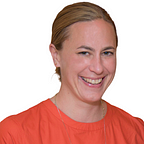Spotlight: Online Art History at the Barnes Foundation
A Conversation with Martha Lucy, Deputy Director for Research, Interpretation and Education
During the pandemic, many museums needed to find ways to utilize content to engage their isolated audiences. For some this meant exploratory videos of past exhibitions, talks with curators, or online forums addressing various cultural topics–all had varying degrees of success.
In the case of the Barnes Foundation, this meant identifying an area that many art lovers and students were excited to see come to fruition–online art history courses. These are not your ‘Intro to Art’ classes of yore with stagnant slides and text. With user-friendly technology and immersive experiences with their collection and educators, the classes have been a wonderful silver-lining stemming from the pandemic time period. Enrollment in the classes continues to grow and expand, and the Foundation looks forward to future offerings.
Kim Bush, CultureTech’s Partner Liaison, recently interviewed Martha Lucy, Deputy Director for Research, Interpretation and Education at the Barnes Foundation to provide more insight on this exciting pathway for art education.
What was the driving force behind starting the online courses? Did it stem from the need for revenue and additional content during the COVID-19 pandemic?
Online art history courses at the Barnes did not exist prior to the pandemic. Since the Barnes’s founding in 1925, classes have always occurred onsite, in the galleries and classrooms. So when COVID forced us to shut everything down, we found ourselves wondering, like so many other cultural organizations, how we could continue to deliver our educational mission. It’s our whole reason for being. In March of 2020, we worked quickly with our IT and AV teams to transition several courses already-in-progress to a digital platform. The student response was super positive. So we kept going, developing 5 or 6 new ones every month. By the end of the year, our enrollment had tripled, and we realized we had not only kept our students engaged but had found a significant new revenue stream.
Who within the Foundation collaborates and produces the courses? What does that process look like internally? What are the challenges?
It is definitely a cross-departmental effort to get between 60 and 70 new online courses up and running every year. My team conceptualizes the content and secures the experts to deliver it. For our instructor pool, we draw a lot from our own staff — our wonderful conservators, curators, and faculty — but we also rely on specialists at other museums and universities. Once the course array is agreed upon, we work with editorial, visual resources, IT and marketing to build the courses on the website and in our ticketing systems, and to make sure students are registered and comfortable using the platform. Because our online courses are taught live, our audiovisual team is critical on the actual day of delivery. They work closely with our instructors to make sure everything goes smoothly.
Have there been any difficulties securing rights for the imagery used in the online courses?
We have a dedicated Visual Resources Manager who handles our image rights for online courses. Securing these rights is time consuming and expensive. Also, depending on the work of art and who owns the rights, we are often very restricted in terms of the way we’re allowed to use the images to promote our classes — especially on social media. It can be very frustrating.
What have been some of the benefits and highpoints that you have seen from the courses?
The obvious benefit is access. Online classes give us a way to reach people who can’t physically make it to our building due to any number of barriers but want to participate and be part of the community. During the first year of the pandemic, we had students tuning in from 8 countries and 40 states; several commented that they had always wanted to take a class at the Barnes but never had the time or means to make the trip. And because we have unlimited capacity in these classes, we’ve been able to significantly grow the number of scholarships we award every year. This has helped to diversify the student body.
Another benefit is that the technology, at times, lets you see the art even better than you can in person. We’re developing a new platform, the first of its kind, that is specifically made for the study of visual media. The platform will allow the instructor to pan slowly across an image as they’re talking — to zoom in on brushstrokes or the canvas weave so that you can really examine the surface. And it will allow students to explore on their own.
What direction would you like to see the program take in the future?
We plan to offer more courses that are taught live from the Barnes galleries and that use the new platform I described above. We’d like to develop topics that are more interdisciplinary — exploring the relationship between art and music, or art and science, for example — and that tap into contemporary issues. We also hope to develop partnerships with other museums and cultural institutions. But the overarching goal is to continue expanding our educational impact.
Do you have a favorite course and if so, tell us why?
This is a hard one! There are so many good options, and we constantly have new offerings. There’s one coming up on German Expressionism that I’m excited about. The instructor, Ty Vanover, does a great job of connecting the incredibly jarring visual forms of that movement with the tumultuous political landscape of early 20th century Germany. And it makes good use of the technology.
